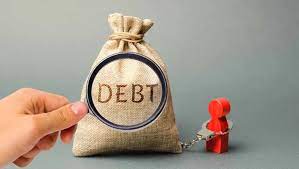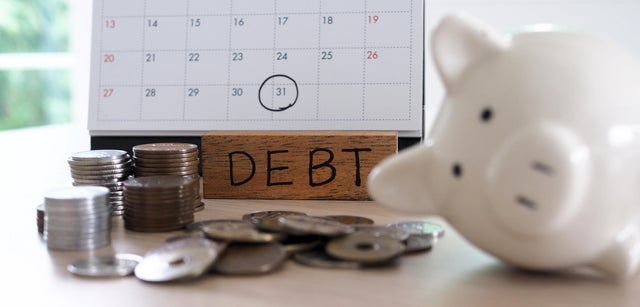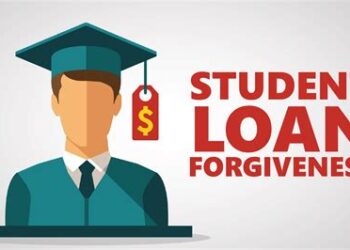In today’s complex financial world, debt is a common reality for many, but it doesn’t have to be a permanent fixture. For a new generation, the old advice of simply “spending less” is no longer enough. The cost of living is rising, wages are stagnating, and major life milestones, like buying a home or pursuing higher education, often come with a significant price tag. Managing personal debt has evolved into a strategic game, one that requires not just discipline, but also smart hacks, technological tools, and a deep understanding of financial psychology. This article will provide a comprehensive, step-by-step guide to tackling personal debt head-on, offering modern, effective strategies that move beyond traditional advice. It’s about empowering you to take control of your financial future, turning the burden of debt into a powerful catalyst for building lasting wealth.
The most crucial first step in any debt management journey is to change your mindset. Debt is not a moral failing; it is a financial tool that, when mismanaged, can become a burden. The goal is to move from a place of fear and anxiety to one of empowerment and control. This shift in perspective allows you to see the process as a solvable puzzle, not an insurmountable obstacle. By understanding the core principles of debt management and leveraging the right tools, you can create a clear path to financial freedom. This is not about a quick fix but about building a sustainable system that works for your unique financial situation.
The Psychology of Debt: Understanding Your Habits
Before you can create a plan, you must first understand the “why” behind your debt. This is the most overlooked but most important part of the process. Debt is often a symptom of underlying spending habits and psychological triggers.
- A. Identify Your Triggers: What prompts you to spend money you don’t have? Is it stress? Is it the desire to keep up with friends or social media trends? Or is it a need for instant gratification? By identifying these triggers, you can begin to address the root cause of the debt, rather than just treating the symptom.
- B. The “Just One More” Fallacy: Credit cards and instant loans make it easy to fall into the trap of “just one more” purchase. This mentality, fueled by the illusion of unlimited funds, is what leads to accumulating small debts that eventually become a major burden. Recognizing this behavior is the first step to curbing it.
- C. Reframe Your Relationship with Money: Instead of viewing money as a means to buy things, start viewing it as a tool to build freedom. Every dollar you don’t spend on a frivolous purchase is a dollar that can be used to pay down debt and bring you one step closer to your financial goals.
- D. The Small Wins Strategy: Tackling a large debt can feel overwhelming. Focus on celebrating small victories. Paying off a single credit card, hitting a small savings milestone, or even just sticking to your budget for a week can provide a powerful psychological boost that keeps you motivated on your journey.
The Strategic Framework: The Two Most Powerful Methods
Once you have a handle on the psychological aspect, it’s time to build a strategic plan. There are two widely-used and highly effective methods for paying down debt. The best one for you depends on your personality and financial situation.
I. The Debt Avalanche Method
This method is for the logically minded person who wants to save the most money in the long run.
- A. List Your Debts: Create a complete list of all your debts. For each one, note the total amount owed and the interest rate. Do not include your mortgage, as this is a different kind of debt.
- B. Order by Interest Rate: The key to this method is to reorder your list from the highest interest rate to the lowest.
- C. Pay the Minimums: Pay the minimum required payment on all your debts to avoid late fees and penalties.
- D. Attack the Top Debt: Take all of your remaining “extra” cash and put it toward the debt with the single highest interest rate. This is your “attack” debt. By focusing on the highest interest rate first, you are paying the least amount in interest over the life of your debt, saving you a significant amount of money.
II. The Debt Snowball Method
This method is for the person who needs quick wins to stay motivated. It is less about saving money and more about building momentum.
- A. List Your Debts: Just as in the avalanche method, list all your debts.
- B. Order by Balance: Reorder your list from the smallest total balance to the largest. Ignore the interest rates entirely.
- C. Pay the Minimums: Pay the minimum required payment on all your debts.
- D. Attack the Top Debt: Take all of your remaining “extra” cash and put it toward the debt with the smallest balance. Once that debt is paid off, take the money you were using to pay it and roll it into your next smallest debt, creating a “snowball” that builds momentum as it grows. The feeling of paying off a debt, no matter how small, provides a powerful psychological boost that keeps you motivated.

Modern Hacks and Tools for Debt Management
Today’s digital world offers a wide range of tools that can supercharge your debt management strategy. These are not a replacement for discipline, but they can make the process easier and more effective.
- A. Automation is Your Best Friend: Set up automatic payments for all your bills. This prevents late fees and ensures that you never miss a payment. Even better, automate your extra debt payments the day after your paycheck comes in. This removes the temptation to spend the money before you have a chance to save it.
- B. The Power of “Micro-Saves”: Apps and services like Acorns can round up your everyday purchases to the nearest dollar and automatically invest the difference. While designed for investing, this “micro-saving” mentality can be a powerful hack for finding small amounts of money to put toward debt.
- C. Debt Consolidation Loans: If you have multiple high-interest debts, such as credit card balances, a debt consolidation loan can be a game-changer. You take out a single loan with a lower interest rate and use it to pay off all your other debts. This simplifies your payments and can save you a significant amount of money in interest over time.
- D. Balance Transfer Cards: For those with good credit, a balance transfer credit card can be a powerful tool. These cards offer a 0% interest rate for a promotional period, usually 12-21 months. You can transfer your high-interest debt onto this card, giving you a window of time to pay it off without the burden of interest.
- E. Find a Side Hustle: In a world with a highly accessible gig economy, a side hustle is a powerful way to generate extra income to attack your debt. This can be anything from freelance work and online tutoring to driving for a ride-sharing service. All of the money earned from your side hustle should go directly toward your debt to accelerate your payoff timeline.
The Long-Term View: Building Wealth After Debt
The ultimate goal of debt management is not just to get to zero, but to build a foundation for a prosperous future. Once your debt is paid off, your financial life truly begins. The same discipline and strategies you used to pay down debt can be repurposed to build wealth.
- A. The “New” Attack Debt: Once a debt is paid off, the money you were putting toward it becomes “extra” cash. Instead of spending it, continue your “attack” strategy by putting that money toward a savings or investment account. This is a powerful way to accelerate your wealth building.
- B. Prioritize Your Emergency Fund: Before you start investing, use the money you freed up from debt payments to build a robust emergency fund. This fund, which should cover 3-6 months of living expenses, is your first line of defense against unexpected financial setbacks. It prevents you from having to take on new debt when a crisis hits.
- C. The Power of Compound Interest: The same force that can make debt so painful—compound interest—can be your greatest ally in building wealth. Start investing early, even with small amounts, and let the power of compounding work for you.
- D. Live Below Your Means: The most sustainable way to stay debt-free is to adopt a lifestyle where you consistently spend less than you earn. This allows you to save and invest for the future, giving you the financial freedom to make choices based on your values, not on a paycheck.
Crushing your debt is a marathon, not a sprint. It requires patience, discipline, and a willingness to make smart choices. But with the right mindset, a clear strategy, and the leverage of modern financial hacks, it is a journey that is well within your reach. The feeling of finally being debt-free is a reward that is worth every ounce of effort, and it sets the stage for a future of true financial freedom and security.













